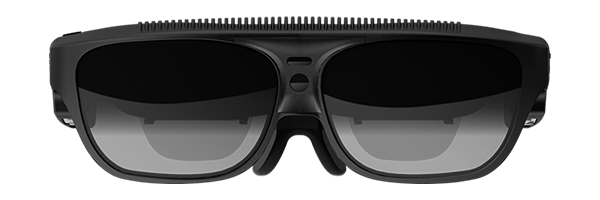Setup Guide ODG

Project Setup for Android Studio
Create a new Android Application Project (There is also a working SampleProject bundled in this SDK, where all these steps are already made)
Copy the file
Library/wikitudesdk.aarinto the libs folder of your module. (project root/app/libs)Open
build.gradlefrom your module, add thewikitudesdk.aaras a dependency and tell gradle to search the libs folder, like in the code below.If you already purchased a license, please set the applicationId to the package name you provided us with.
android {
...
}
dependencies {
compile (name: 'wikitudesdk', ext: 'aar')
}
repositories {
flatDir {
dirs 'libs'
}
}
defaultConfig {
applicationId "xxxx"
}
- Add the following permissions to your AndroidManifest.xml
<uses-permission android:name="android.permission.INTERNET" />
<uses-permission android:name="android.permission.ACCESS_COARSE_LOCATION" />
<uses-permission android:name="android.permission.ACCESS_FINE_LOCATION" />
<uses-permission android:name="android.permission.ACCESS_NETWORK_STATE" />
<uses-permission android:name="android.permission.ACCESS_WIFI_STATE" />
<uses-permission android:name="android.permission.ACCESS_GPS" />
<uses-permission android:name="android.permission.CAMERA" />
<uses-permission android:name="android.permission.WRITE_EXTERNAL_STORAGE" />
<uses-feature android:name="android.hardware.camera" android:required="true" />
<uses-feature android:name="android.hardware.location" android:required="true" />
<uses-feature android:name="android.hardware.sensor.accelerometer" android:required="true" />
<uses-feature android:name="android.hardware.sensor.compass" android:required="true" />
<uses-feature android:glEsVersion="0x00020000" android:required="true" />
- The activity holding the AR-View (called
wearableArchitectViewin the following) must have setandroid:configChanges="screenSize|orientation"in theAndroidManifest.xml, for example this could look like:
<activity android:name="com.yourcompany.yourapp.YourArActivity"
android:configChanges="screenSize|orientation"/>
- Enter a valid trial license key. Read this chapter on how to obtain a free trial key.
AR View in Activity
Keep in mind that the Wikitude SDK is not a native Android SDK as you know from other SDK's. The basic concept is to add an wearableArchitectView to your project and notify it about lifecycle events. The wearableArchitectView creates a camera surface and handles sensor events.
The experience itself, sometime referred to as ARchitect World, is implemented in JavaScript and packaged in your application's asset-folder (as in this project) or on your own server.
The experiences are written in HTML and JavaScript and call methods in Wikitude's AR-namespace (e.g. AR.GeoObject).
You have to include
<script src="https://wikitude.com/libs/architect.js"></script>
in your HTML files to use the AR namespace and the wearableArchitectView will handle them properly. To test an ARchitect World on a desktop browser, you must include ade.js tool instead to avoid JavaScript errors and see a development console.
It is recommended to handle your augmented reality experience in a separate Activity.
Declare the wearableArchitectView inside a layout XML.
E.g. Add this within FrameLayout's parent tags.
<com.wikitude.architect.WearableArchitectView android:id="@+id/wearableArchitectView"
android:layout_width="fill_parent" android:layout_height="fill_parent"/>
WearableArchitectView is creating a camera surface so ensure to properly release the camera in case you're using it somewhere else in your application.
Besides a camera (front or back-facing) the WearableArchitectView also makes use of compass and accelerometer values, requires OpenGL 2.0 and at least Android 4.0.
WearableArchitectView.isDeviceSupported(Context context) checks whether the current device has all required hard- and software in place or not.
It is very important to notify the WearableArchitectView about life-cycle events of the Activity.
Call wearableArchitectView's onCreate(), onPostCreate(), onPause(), onResume(), onDestroy() inside your Activity's lifecycle methods.
Best practice is to define a member variable for the wearableArchitectView in your Activity. Set it right after setContentViewin Activity's onCreate(), and then access wearableArchitectView via member-variable later on.
this.wearableArchitectView = (WearableArchitectView)this.findViewById( R.id.wearableArchitectView );
final ArchitectStartupConfiguration config = new ArchitectStartupConfiguration();
config.setLicenseKey( * license key */ );
this.wearableArchitectView.onCreate( config );
wearableArchitectView.onCreate( config ).
Activity's onPostCreate() is the best place to load the AR experience.
this.wearableArchitectView.onPostCreate();
this.wearableArchitectView.load( "YOUR-AR-URL" );
On the first start of an AR-View the Wikitude SDK looks for a calibration. By default the calibration is stored on the external storage, it can also be set manually by calling wearableArchitectView.onPostCreate('calibration path'). It is recommended to use the default calibration path so users who have other apps installed powered by Wikitude SDK can use the same calibration. More about the calibration and how it can be customized can be found here.
The wearableArchitectView.load() argument is the path to the html file that defines your AR experience. It can be relative to the asset folder root or a web-url (starting with http:// or https://).
e.g. wearableArchitectView.load('arexperience.html') opens the html in your project's assets-folder, whereat wearableArchitectView.load('http://your-server.com/arexperience.html') loads the file from a server.
wearableArchitectView.load('arexperience.html?myarg=1')
Location
Management of the location is important in location based augmented reality applications. Depending on the use-case location is used via GPS or network and may be updated every second or once in a while.
Although the SDKExamples project provides a basic implementation of a LocationProvider this is by far not the best location strategy available for Android.
Please use your own advanced location strategy implementation in case you have special requirements.
Stereoscopic Rendering (2D/3D Mode)
The Wikitude SDK provides two different Stereoscopic modes:
- Wikitude SDK Stereoscopic Mode
- Hardware Stereoscopic Mode
The Wikitude SDK stereoscopic mode splits the view and renders a calibrated image separately for both eyes. It can be enabled by using
wearableArchitectView.setStereoscopic3dRenderingEnabled(true for 3D mode or false for 2D mode).
The hardware stereoscopic mode of the ODG extends one image over both displays. For 2D mode the same 1280x720 pixel image is displayed on both eyes while for 3D mode the image is doubled in width and then split in half. The left halft is displayed on the left eye and the right half is displayed on the right half. The images for each eye are 1280x720 in size while the whole image is 2560x720 pixel.
To enable the hardware stereoscopic mode wearableArchitectView.setStereoscopic3dDisplayModeEnabled(true for 3D mode or false for 2D mode, StereoscopicDisplayCallback) can be used.
In most cases it makes sense to set both stereoscopic modes to the same value.